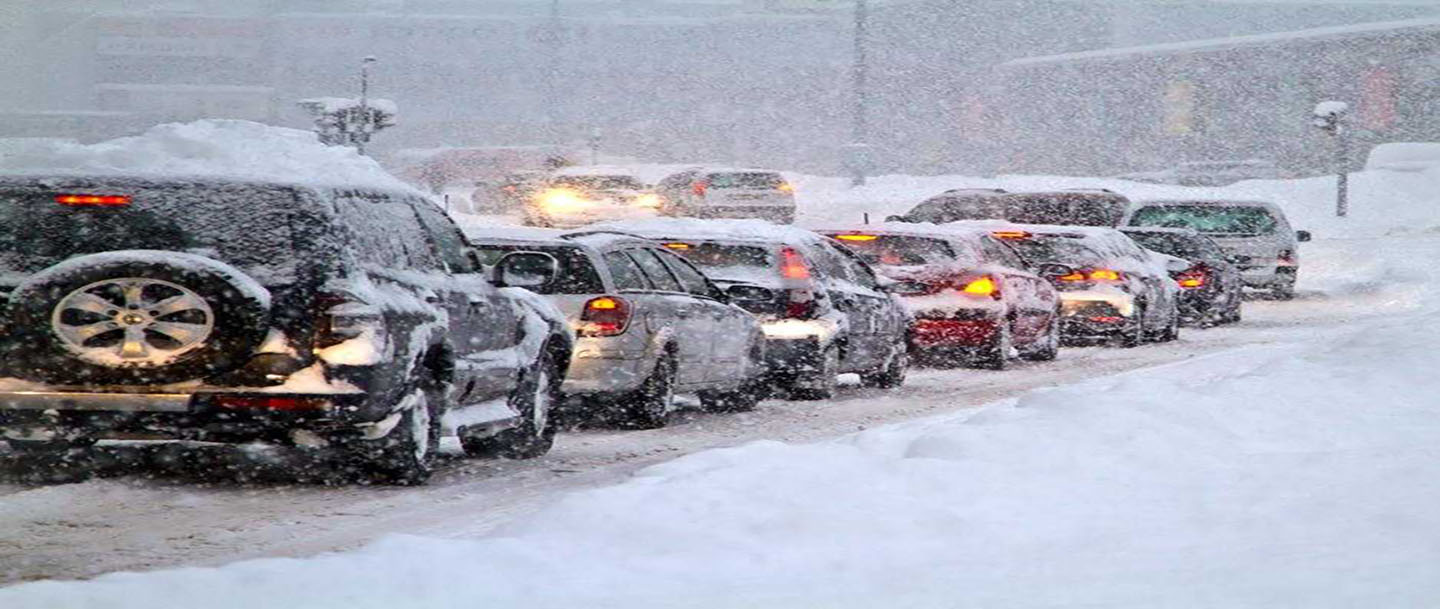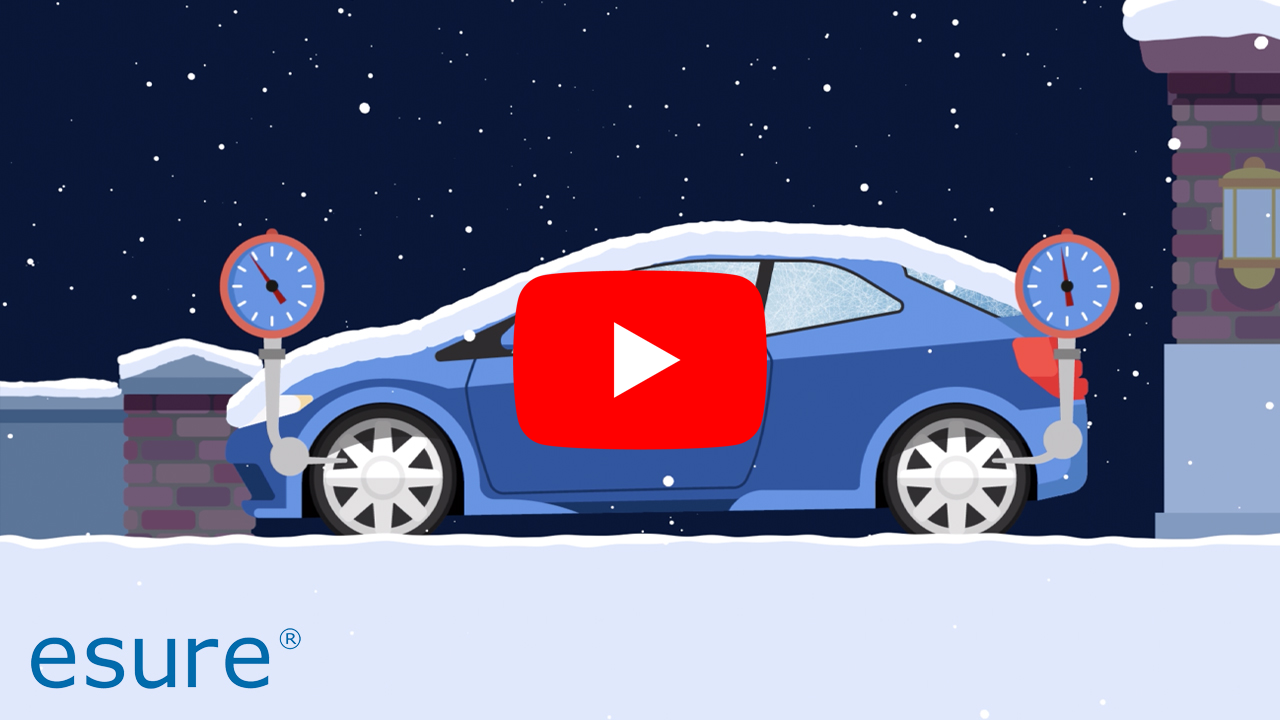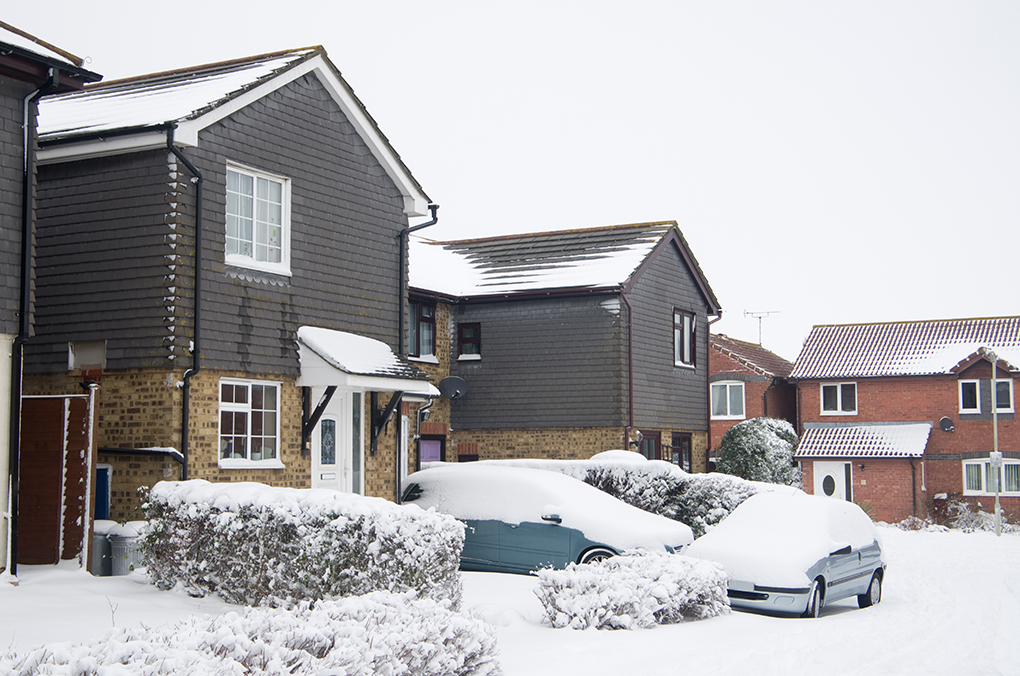According to Statista (2020), around 20,000 pedestrians are injured or killed on British roads every year – and we all know that winter weather just makes it harder to drive, with slippery roads, bad visibility, and unpredictable conditions. Here at esure, we provide brilliant car insurance in the event of an accident – but we want to make sure that our drivers are safe out there, so we’ve pulled together some essential safety tips for winter weather.
1. Learn the warning signs
Quick top tip: If your engine takes a while to start on chilly mornings, you might need to check your battery.
During winter, the battery is usually the first things that goes wrong so be on the lookout for a faint whining noise or even no noise at all after you start the ignition.
So what can you do if you’ve got a dead battery? The RAC recommend to check your breakdown cover and try to contact a garage in order to get your battery replaced.
2. Plan ahead
Quick top tip: Check the Met Office for weather warnings before you drive
You should avoid driving unless absolutely necessary when there is snow and ice on the roads. If you do have to venture out, you’ll have to drive slower than usual, and the roads might be congested, so you’ll need more time.
Stay informed and check your route - you can use the Met Office to stay up to date with weather warnings. Plus, you might want to keep an ice scraper and de-icer in your vehicle during winter.
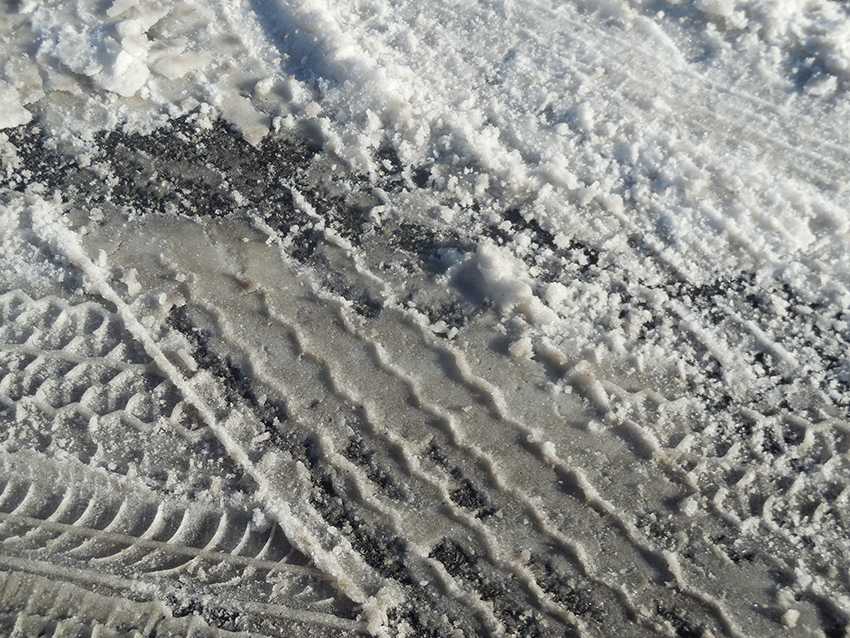
3. Check your tyres
Quick top tip: Make sure your tread depth never falls below 3mm
They’re one of the most important parts of keeping safe when you’re driving in winter, so your tyres should always be a priority when the weather starts looking a bit worrisome. Regardless of what car you drive, you need to keep a close eye on your tyres – the RAC recommend that the tread depth should never fall below 3mm. Be sure to check the pressure as well since tyres can lose up to 0.14 bars of pressure when the temperature decreases by 10°C.
Other important parts you should check include your wipers and screen wash, according to the RAC.
When driving, you should always maintain a safe distance but it’s vital in icy weather as you need to account for much longer stopping distances and being able to brake gently–harsh braking is more likely to make you skid, according to the RAC.
It’s also important to remember that different cars will handle differently. For instance, electric vehicles are generally heavier than non-EV cars according to InsideEVs (2021), meaning slides, once they start, are likely to be harder to correct. Just like a conventionally fuelled car, consider investing in a good set of winter tyres for better grip in lower temperatures.
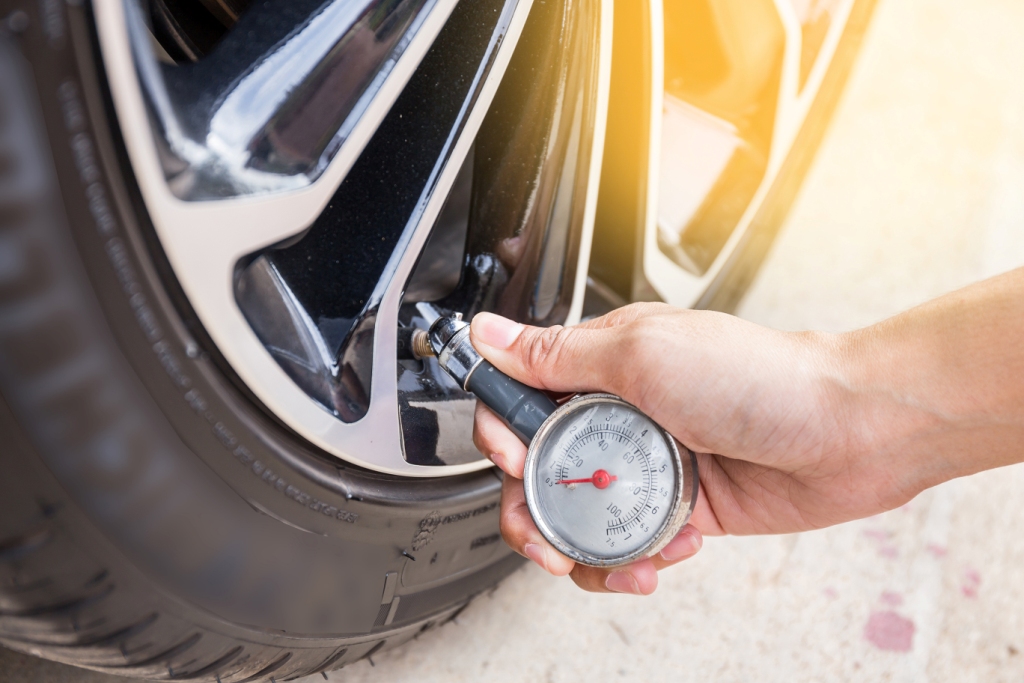
4. Defrost your car thoroughly - and do it the right way
Quick top tip: Don’t use hot water to deice your window – you could cause it to crack
When you’re in a hurry in the morning, it can be tempting to just go at the frost on your car with whatever’s handy. But using credit cards or CD boxes to scrape the windscreen can take more time, and you risk scratching the glass.
You might debate pouring hot water on the ice, but this is definitely one to avoid - the rapid increase in temperature could cause the glass to crack. On particularly cold mornings, hot water will cool quickly and freeze again anyway. Instead, use de-icer spray and an ice scraper.
One of the best ways to defrost your car is to prevent it frosting over in the first place – lay cardboard, a towel, or a specially-made anti-frost panel across the windshield before any frost can form and save yourself a job in the morning.
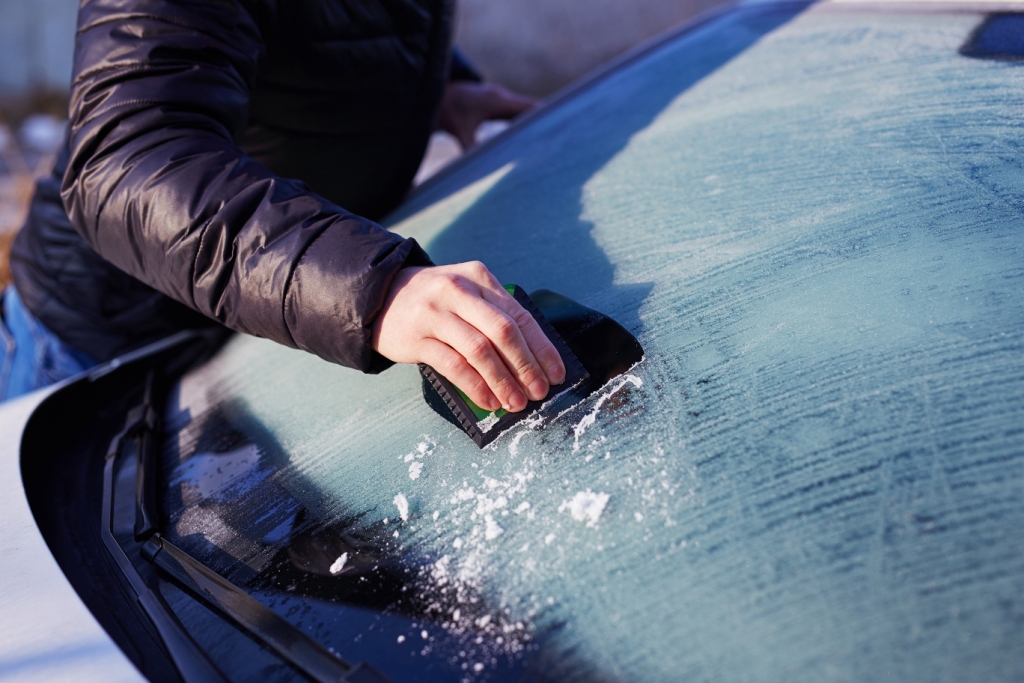
5. Always clear all of the snow from the roof of your car
You should clear the snow off all the windows, lights, and the roof. Driving around with a thick layer of snow on your roof can be dangerous as it could slip forward onto your windscreen, or backwards into the path of the car behind. Use a foam brush or a broom with non-abrasive bristles to avoid damaging your car’s paintwork.
6. Make sure your car has an emergency pack
Quick top tip: Make sure you’ve got everything you might need for a night in the car
Hopefully, it won’t ever happen, but you might end up stuck in your car for a long time, awaiting rescue or waiting out bad weather. Make sure you’ve got everything you need in the car with you by keeping an emergency pack in your car. Not sure what to include? Here’s what you should have in your pack:
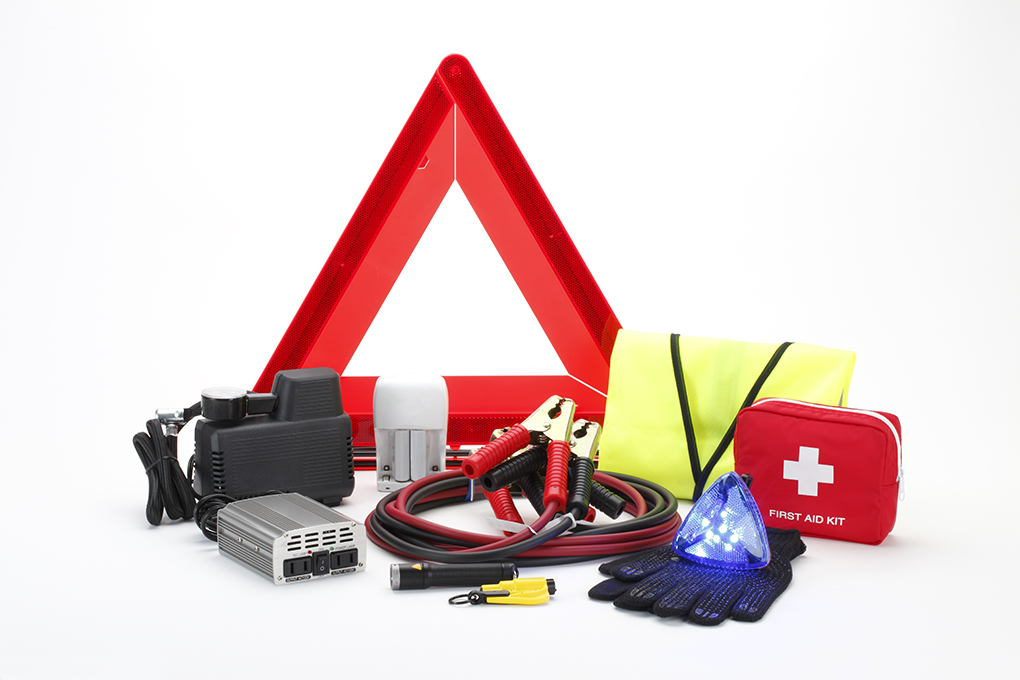
Basics
• A torch – pack a wind-up model that doesn’t need batteries
• Warm clothes
• Food and drink that will keep for a while – think bottled water and energy bars
• A warm insulated blanket
• First aid kit
•A shovel
• Hi-vis vest
• A phone charger or fully charged power bank
• Any essential medication that you need to take regularly
Car essentials
• Jump leads
• De-icer
• Ice scraper
• A warning triangle
The RAC advise that the most important thing to have with you is a fully-charged phone with your breakdown provider’s number stored in it, so you can call for help when you need it most. If you’re an esure customer, make sure you’ve got our emergency numbers saved. .
7. Use your gears effectively
Quick top tip: Keep carpet squares in the car to help you get out of snow
When driving in snow, brake gently to avoid locking the wheels. Get into a low gear earlier than normal and allow the speed of the vehicle to fall gradually. Take corners very slowly–steer gently and steadily to avoid skidding.
If you get stuck in snow, use the highest gear possible to avoid wheel spin, but take care not to let your speed creep up. If stuck in snow, do not spin the wheels or rev the vehicle, as this will dig the wheels further in the ground. Instead, put the vehicle into as high a gear as possible and slowly manoeuvre the vehicle lightly forwards and backwards to gently creep out.
Another top tip is to keep a square of carpet or recovery track in your boot - if you’re stuck in snow, put it under your drive wheels to give you enough traction to get free.
8. Dipped beams
Turn these on to make sure other drivers can see you but avoid using your full beam or fog lights (unless it’s actually required) as they can dazzle other drivers. The Highway Code states that drivers must turn headlights on when visibility reduces to less than 100m, so make sure you can see and be seen.
9. Don't panic if you skid
Never brake if the vehicle skids–instead, ease off the accelerator and steer slightly into the direction of the skid until you gain control.

10. Be extra careful if you’re in an electric vehicle
Jon Byford from our team here at esure also has some top tips for safely driving electric vehicles in winter. Here’s what you need to be aware of:
Your battery will be affected
Battery performance is lower in winter weather’, Jon says. ‘Cold weather slows down the chemical reactions within the battery, with the ultimate outcome being reduced range. Charging speeds may be slower, so plan for a longer charging time.’
Park your EV in an enclosed space when possible
Charging activity pre-heats the battery - time your charging to finish just as you want to start driving. Some EVs come with battery heating which helps regulate the battery temperature – but unfortunately this in turn uses some energy.
Keep an eye on the heating system to save energy
Unless you have a heat pump fitted to your EV, the internal heating system can be a significant drain on the battery. Where available, use temperature pre-conditioning to pre-heat the interior of your car before you disconnect from the charge-point. Using heated seats and steering wheel (where available) will also use less energy than heating the entire cabin.
Don’t try to save energy by not using safety critical equipment like lights or windscreen wipers – they only use a tiny amount of energy and could be the difference between you having an accident or not.
Looking for more top tips? Head to the Hub for more ideas and suggestions. Make sure you stay safe out there this winter – and before heading out, be sure to double-check your policy so you’re aware of what is and is not covered, should an accident happen.
If you want to see what support you can receive when driving during these tricky conditions, check out our car insurance options.
REFERENCES:
Statista Research Department. (Feb 10 2020). Driving in the UK - Statistics & Facts. Available: https://www.statista.com/topics/5192/driving-in-the-united-kingdom/#dossierKeyfigures.
Harry Thompson. (Nov 30 2021). 6 snow and ice driving laws all motorists need to know – or risk a £10,000 fine. Available: https://www.mirror.co.uk/news/uk-news/6-snow-ice-driving-laws-25574812. Last accessed 17/12/21.
The RAC. (Aug 26 2020). Tyre tread depth and tyre safety checks Available: https://www.rac.co.uk/drive/advice/tyres/checking-tyre-tread/. Last accessed 06/01/21.
The RAC. (Feb 04 2021). A complete guide to driving safely in snow. Available: https://www.rac.co.uk/drive/advice/winter-driving/driving-in-snow/. Last accessed 17/12/21.
The RAC. (2021). Car won't start in the cold? Possible causes and preventative tips. Available: https://www.rac.co.uk/drive/advice/how-to/getting-started-in-the-cold/. Last accessed 06/01/2022.
Continental Tyres. (2021). Tyre pressure in winter. Available: https://www.continental-tyres.co.uk/car/all-about-tyres/winter-world/overview/tyre-pressure-in-winter. Last accessed 17/12/21.
Mark Kane. (2021). Electric Cars From Heaviest To Lightest. Available: https://www.insideevs.com/news/527966/electric-cars-from-heaviest-lightest. Last accessed 06/01/2022.
Richard Ingram. (2021). Will an electric car work in the winter? Available: https://www.drivingelectric.com/your-questions-answered/319/will-electric-car-work-winter. Last accessed 06/01/2022.
You might also be interested in
The winterproofed car
While you should avoid driving in the snow wherever possible, we get that sometimes a journey is unavoidable - and our policies do cover you for this. Find out how to winterproof your car here.
Keeping safe during the snow
How to keep your home safe and warm during the cold snap
